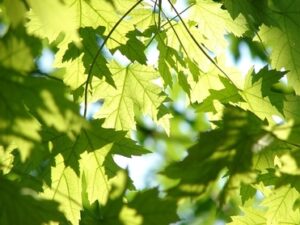The Christmas trees at the store come from a nearby farm or forest. And they have been cut down in the days preceding your visit. In other words, insects have taken up residence and laid their eggs. So you are likely to spot mantises, spiders, bark beetles, mites, aphids… among many other possible species.
Wreaths or garlands made from live tree stems have traveled thousands of miles to their destination. Insects from abroad may have traveled on them.
There are simple steps you can take to reduce some of the risks associated with insects. The rest of this article outlines some of these steps.
Optimal time to store for a Christmas tree
First of all, it is much easier to identify insects and eggs in a tree during the day than in the evening. Thus, it is best to avoid shopping in the dark.
Examine the underside of the branches
You should look for red or brown spots, or white spots on the needles in your new tree. Or clusters of eggs or white flakes. And insects. To do this, look at the trunk, the lower branches (especially the back).
Removing insects from a Christmas tree
Aphids are the most likely to be present in your tree. You can kill them with non-toxic neem oil or with an insecticidal soap that you make yourself. This way, you know what it is made of and you don’t use commercial chemical sprays that are harmful to your health. In addition, they could encourage a fire to start in the needles since they are generally flammable.
Also be aware that insects can come down from the tree to explore your lovely interior. They will crawl on your floor and on your furniture. Don’t crush them, as you may stain your surfaces. Vacuuming is a better way. But then treat the bag with the same non-toxic products already mentioned: DIY insecticidal soap or non-toxic neem oil.

Disposing of your Christmas tree
The holidays are over, the decorations are down, what to do with the tree now?
Sure, it’s tempting for you to throw it incognito in a field or put it in your compost. But don’t do it. You could trigger the spread of insects in the environment.
Your municipality is likely to have a Christmas tree collection. If so, it’s usually enough to leave the tree at the curb and it will be picked up. If not, you will have to take it to a solid waste facility, landfill or dump. Another option is to have a tree service company such as emondage Saint-Jean chop it up. All of these methods will prevent unwanted spread.
Avoiding a Christmas insect infestation
Your home could also end up with an infestation, as unwanted as it may be. In this case, proper treatment is essential.
By now you are aware that holiday conifers may contain insects, that you should inspect your tree and remove the eggs and insects and carefully dispose of your tree.
This protects our ecosystems from foreign insect pests. If they were to spread here, plant species could be crippled in the long run.
